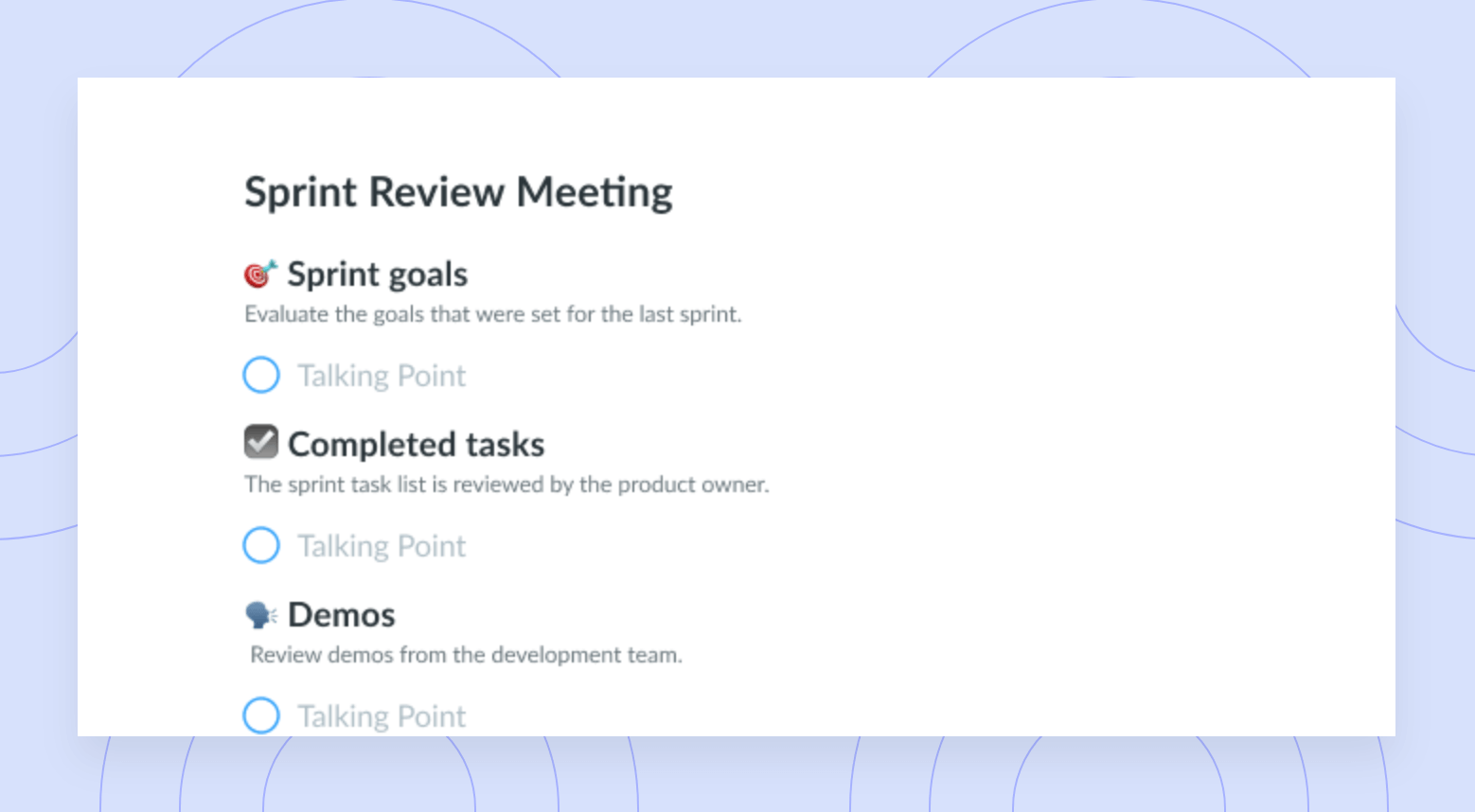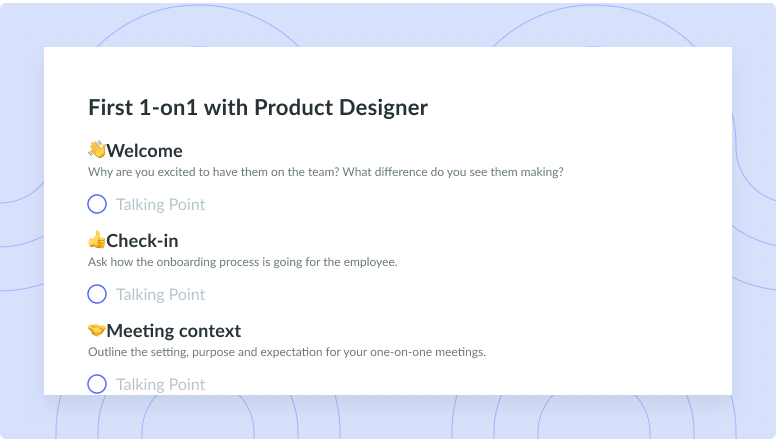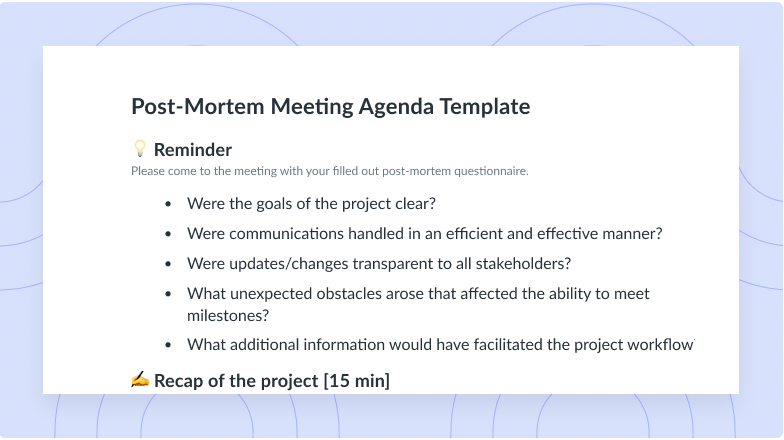
Backlog Grooming Meeting Template
Get this templatePresent user stories, break them up into atomic parts, and vote on the number of points for each story to come up with an estimation.


What is Backlog Grooming?
Backlog grooming, also known as backlog refinement, is a common process undertaken by product development teams who follow the Agile methodology. It involves a periodic re-examination of product backlog in order to ensure that it accurately reflects the needs and wants of customers, and that all items on the list are properly prioritised.
Backlog grooming is typically done in a meeting between a Development team and Product Owner and can involve discussion on each item on the backlog in order to get a better understanding of its overall status. The aim is to come to a consensus and agreement with which everyone is satisfied and that teams can use as a clear and accurate roadmap going forward.
The process of backlog grooming can help ensure that product development is more efficient, and that the final product is better aligned with customer expectations. It also allows for a greater level of transparency and communication between all parties involved in the development process.
Meeting frequency
The frequency of backlog grooming meetings can vary by circumstance, however it’s generally recommended to conduct one two or three days prior to the end of each sprint cycle. For example, if a team works a one-week sprint, it should happen towards the end of the week. Alternatively, if they work a two-week cycle, meetings could realistically be held biweekly.
While backlog grooming is not required by all Agile teams, it is considered best practice by many, as it helps to ensure that the product backlog is always up-to-date and accurately reflects the needs of the customer.
How to run an effective Backlog Grooming Meeting?
Best practices for conducting a successful Backlog Grooming meeting include the following:
Pre-planning and preparation
Before the meeting, it is important to take some time to review the product backlog and ensure that all items are properly prioritized. The Development Team Lead should create a plan for the meeting and distribute it to all attendees in advance. This will help keep the meeting on track and ensure that all topics are covered.
All attendees should come prepared
For the meeting to be effective, all attendees should come prepared with any questions or comments they may have on the product backlog. This will help to ensure that all voices are heard and that everyone is on the same page.
Meeting facilitator
The lead should ensure that all attendees are able to voice their opinions and that the discussion stays on topic. They should also be responsible for keeping track of time and ensuring that the meeting ends on time.
Remember the goal of the meeting
It is important that all attendees leave the meeting feeling like their concerns have been heard and that they agree with the decisions that were made. If there is disagreement, it is important to continue the discussion until everyone agrees.
Follow up after the meeting
After the meeting, the Development Team Lead should send out minutes of the meeting to all attendees. This will help to ensure that everyone is on the same page and knows what needs to be done going forward.
What’s inside Backlog Grooming Meeting Template:
1 Step 1 — User story discussion
The Product Owner presents a user story, and the Development Team asks questions to get a common understanding. The questions asked during this step should help the team to understand the user story better and identify any risks or uncertainties.
2 Step 2 — Decompose
IIf discussions reveal that a user story is high-level and complex, the team should break it up into more precise and detailed atomic parts. This process is known as decomposition.
3 Step 3 — Voting with Planning Poker Cards
EveryEveryone in the Dev Team makes up their mind about the number of story points for this user story. Usually, there are up to three voting rounds for each user story. The goal is to come to a unanimous vote.
4 Step 4 — Looking for trade-offs
The Product Owner should influence estimation by helping the dev team understand and select trade-offs, but the final decision is theirs. This can be done by looking at the value of each user story and comparing it to the cost.
5 Step 5 — Follow-Up with Additional Questions
Collect feedback from your peers regAfter the meeting, the Development Team Lead should send out minutes of the meeting to all attendees. This will help to ensure that everyone is on the same page and knows what needs to be done going forward.
















